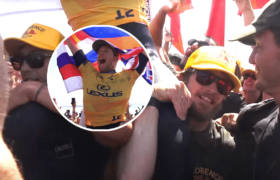Want your surfing to be a joy not an exercise in frustration? Finesse your technique!
I spent ten hours at the beach today. A Minnesotan’s dream, my worst nightmare. But after watching a full day of amateur collegiate surfing, I feel primed and ready to deliver another installment of technique critiques. The average joe edition!
Disclaimer: this is more of a how-to-easily-improve-your-surfing than a technique critique. It’s based on those faux pas I witnessed today and throughout my lifetime of surfing spectatorship.
Paddling
The most basic, brainless aspect of surfing. At least that’s what most amateurs seem to think. In reality, paddling makes all the difference in the world. A strong paddler will improve his surfing twice as fast as a lame duck because of wave count and positioning.
The first concept is simple. If you paddle faster and more efficiently, you’ll catch more waves. If you catch more waves, you’ll get more opportunity to practice and thus improve more quickly than those around you.
Paddling to position yourself is one of the most crucial skills in the game. It involves a combination of wave reading, timing, and paddle strength, but if done correctly you will maximize the potential of every wave caught. The key is to position yourself to gain as much speed as possible on the takeoff, while setting yourself up to utilize that speed on the first section.
Most amateurs don’t know how to get up and boogie. The main reason comes down to foot placement. We all want to rip one off the top and let the fins breathe, and that happens from standing on the kick. But guess what you need in order to perform the vicious lip kick? Speed. And from where do you most efficiently gain this momentum? The center of the board.
Some basics techniques to improve your paddling include: keeping your head still (this will stop you from “yawing”, when the board shimmies side to side underneath you thus slowing forward momentum), positioning yourself in a way to paddle minimally (sit under an approaching swell and wait for it to reach you, don’t paddle out to it) and making the last three strokes your strongest (acceleration during takeoff facilitates the pop-up and makes skirting past the first section a breeze).
Pumping
Most amateurs don’t know how to get up and boogie. The main reason comes down to foot placement. We all want to rip one off the top and let the fins breathe, and that happens from standing on the kick. But guess what you need in order to perform the vicious lip kick? Speed. And from where do you most efficiently gain this momentum? The center of the board.
Surfboards are designed with flipped noses and tails so that you can perform maneuvers without sliding out or nosediving. If you remain planted on the tail when trying to pump, you’ll naturally plow (push water) and lose potential speed. However, if you shift both feet forward (back foot just in front of the pad, front foot just past the midpoint of the board), your sled will plane through flat spots and allow you to maximize speed heading into a section. The downside is that the footwork (getting your feet back to the sweet-spot just before you perform a turn) can be tricky to dial, but with enough practice it becomes second nature.
Backside lipper
Pick a spot and commit. Once you’ve decided to hit the section, drive hard off the bottom and point eyes and arms toward the trough of the wave. You won’t be able to see any thing, but you don’t need to. When you feel like your nose is about to pierce the lip, kick back on the tailpad and jam the front foot down simultaneously. This will allow for the Wilko-whipping sensation, providing spray and slide aplenty. But the main thing is trusting your initial instinct and blindly attacking the lip.
Airs
Don’t. Kick. Your. Board. Away. Instead of trying to fling yourself off a section, imagine popping off the lip while taking a small step forward with your front foot. Literally shift your weight (shoulders and hips) forward while lifting your front foot and moving it toward the nose. This will help you stay over it and provide a softer landing position (wider landing stance = more stability and fluffier impact due to rocker and board flex).
Or just comment about how this should be on The Inertia and continue surfing like a soggy crouton. Your choice!








